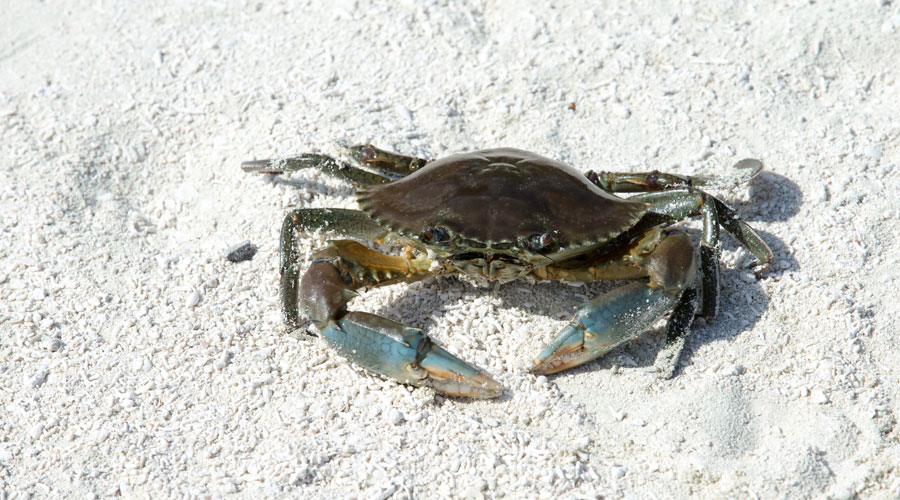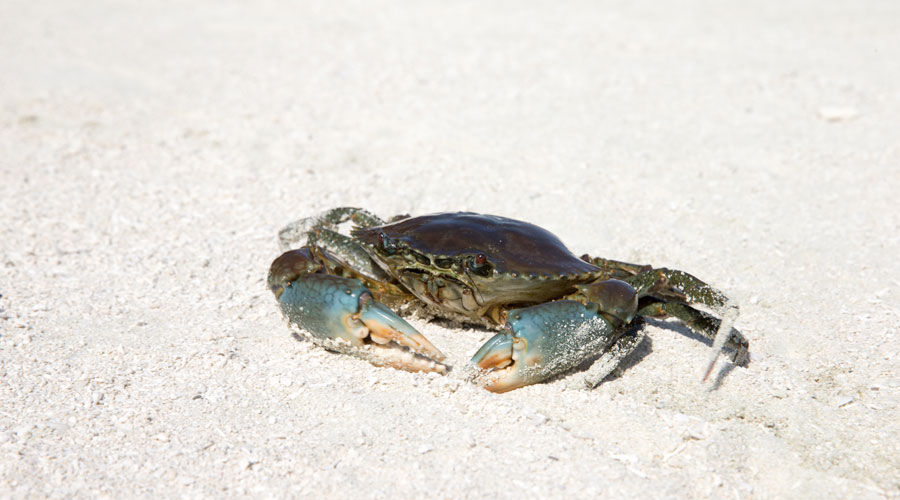You might call the blue crab a little temperamental.
Annoy it too much, says National Geographic, and the crustacean’s “prickly disposition” might come out. In fact, the magazine says, blue crabs have short fuses, and they’re quick to use their pincers against any creature that has raised their ire.
While you may know them as the Maryland state crustacean or your favorite local seafood, blue crabs are an important part of the Chesapeake Bay’s ecology and history. Blue crabs will eat just about anything – clams, mussels, dead fish, snails, even other crabs. They do a good job of keeping the population of these creatures in check. But when the number of blue crabs falls due to overfishing or habitat changes, the balance of water like the Bay are thrown off.

Scientifically, blue crabs are called Callinetes sapidus, a Latin phrase that means “savory beautiful swimmer,” a fact that seafood lovers already knew. They get their common name from their sapphire blue claws; females have a little red on the tips of their pincers.
Blue crabs are native to the waters of the Atlantic Ocean from Nova Scotia south along the United States’ East Coast and into the Gulf of Mexico. They are among the most harvested creatures in the world. The Chesapeake Bay is the world’s largest blue crab fishery.

Here are a few more facts you can wow your friends with at your next crab feast:
- Females mate only once during their lifetime.
- Males mate several times during their lifespan. They perform a leg-waving dance to attract attention during mating season.
- You can tell males and females apart by looking at their abdomen. This easy, local mnemonic helps you tell the difference: The shape on a female’s abdomen looks like the dome of the Capitol. The shape on a male’s abdomen looks like the Washington Monument.
- Females release about 2 million eggs, which are swept out into the ocean to mature. The young crabs return to the coastal waters to mate.
- The average lifespan of a blue crab is three years.
- Blue crabs are close relatives of the shrimp and lobster.
- Males are about 9 inches wide.
Lexington Park MD Homes for Sale and Real Estate Services in Southern Maryland. You now have a search engine to help you with your Southern Maryland home search! And I’m ready to provide you with a custom home valuation if you’re considering selling your home. Let’s connect to discuss how I can help you. Contact Kimberly Bean at 301-440-1309





